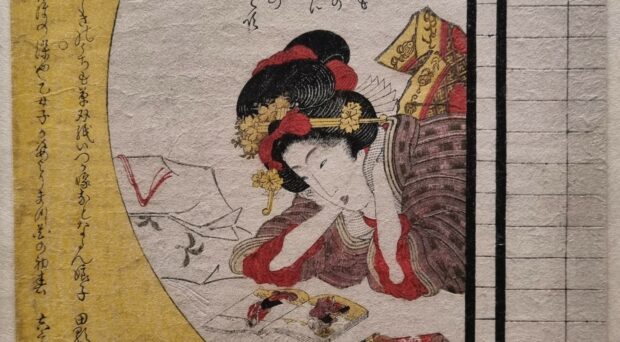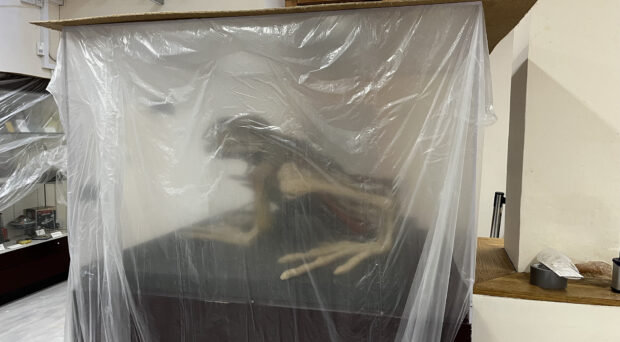A lot of buildings and architectural features in and around Cambridge have historically been made of limestone as it was readily available and relatively easy to quarry and to carve.
Today, some of these features and objects can be found in local museums, like for example, the sculptures at the Museum of Cambridge (shown above) that used to decorate the Victorian fountain on Cambridge’s Market Square from 1855 to 1953. But limestone is a rather soft, porous, and easily damaged material that poses some tough challenges to museums and conservators.
As part of their conservation work, the University of Cambridge Museums (UCM) consortium not only provides collections care and conservation support to the University museums, but also to independent local museums in Cambridgeshire and Peterborough. Deborah Walton is UCM’s Regional Conservation Officer. In her role she had been contacted by several local museums around Cambridge seeking advice on cleaning some of the limestone objects in their collections.
As a conservation student at UCM, I had the chance to support Deborah with this task and we came up with the idea to create a guide that would give background information on what limestone actually is and how it deteriorates, and that would provide practical advice for limestone cleaning and care.
The national Covid-19 lockdown at the beginning of this year unfortunately restricted us from visiting the museums in person, so I turned to the library and numerous online resources and case studies to do some in-depth research on limestone deterioration and to determine what conservation methods would be most useful.
Cleaning techniques had to be safe to the objects as limestone is easily scratched and can suffer severely if overexposed to water or commercial cleaning products. I also wanted the methods to be inexpensive, simple, and practicable because most of the museums rely on the support of or are run entirely by a volunteer workforce. Additionally, I aimed for the guide to help in the decision-making of whether an object actually needed cleaning or not, and how to identify object conditions for the treatment of which it would be better to consult with a professional stone conservator.
The outcome is a handbook with theoretical background information on factors contributing to the deterioration of limestone, reasons for cleaning or not cleaning limestone, possible risks to objects and personnel, an overview of materials, time, and staff resources needed as well as advice on storage and display conditions. It is intended primarily for the decision-makers, while a short ‘How-To’ guide for those conducting the cleaning can be found at the end of the document.
To me, writing this guideline not only was a very good opportunity to work on a conservation project during lockdown, but it also gave me some valuable insights into how local museums are run, and that the challenges they face can be very different from those of large museums. During June and July, I had the chance to visit two of the local museums to have a look at their limestone objects and to meet the people working there. It is amazing to see how dedicated everyone is and how much time and effort is contributed to care for their collections!
This said, I would especially like to thank Burwell Museum & Windmill for an interesting day speaking to their Education Officer and some of their volunteers. It was great to witness how they set up a permanent shelter for the St. Andrews Church stones in the courtyard to protect them from rainfalls and direct sunlight just the day that I visited! And many thanks also to the Museum of Cambridge where I had the chance to speak to the museum’s Collections Officer about the challenges they face with their objects.
Now you may be thinking, ‘this guide sounds like it is just what I am looking for, where do I find it?’
Together with SHARE Museums East* we have made the guide ‘Cleaning and Caring for Limestone Objects’ available on their website in the Collections Resources section.
If you require further assistance do not hesitate to contact a specialist conservator or museum development provider in your region.
*SHARE Museums East is the Arts Council England funded Museum Development programme for the East of England. It supports excellence, resilience and co-operative working in museums. UCM and SHARE work closely together on many projects, including an annual collections care conference each January (use hashtag #sharedknowledge21 on YouTube to have a look at this year’s conference or click here to view the playlist). Visit https://www.sharemuseumseast.org.uk/ for more information on SHARE.







